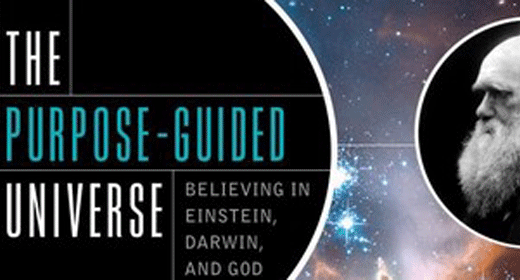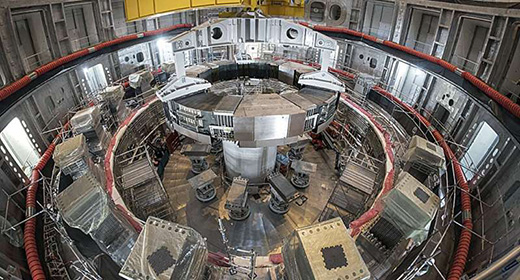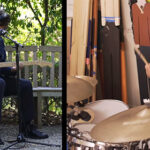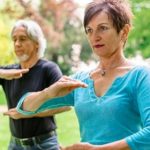David Welch: How is Yoga generally, and Kundalini Yoga specifically, a means and a method to awakening?
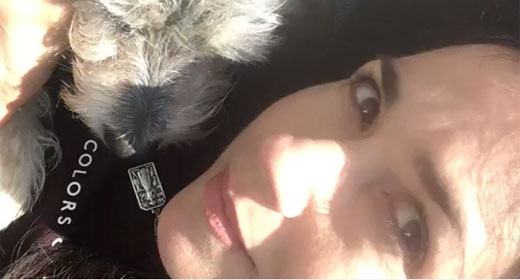
Donna Quesada: Because Kundalini Yoga offers specifically, a technology whereby we set up the physical conditions for awakening. So, as an analogy, just off the top of my head…say, it’s time to go to bed. You want to set up the conditions to better get a good night’s rest. So, you’re more likely to fall asleep if you lie yourself down and set the temperature the way you like it…close the blinds and make it dark and that sends the right kind of message to your brain…your brain starts to produce melatonin when it gets dark. And when this is habituated, your body starts to behave accordingly. You’re more likely to fall asleep. As opposed to getting on a tread-mill…you’re less likely to get to sleep.
What we are doing in Kundalini is akin to that. We are setting up the physical conditions for Awakening. Because as I explain in my video which you just posted on Awaken…there is really an energetic component to what we are doing in yoga. There’s the visible stuff where we see people in poses and people doing funny breathing exercises. But what is happening is…we are unblocking energetic blocks which allows the energy to move in such a way that it facilitates the experience that we call “Awakening.”
Or, we have other fancy names for it like, Self-Realization. Or, Samadhi, which means, the state of no separation. Non-distracted awareness. Presence. Samadhi. God Realization. Wholeness. Oneness. We have so many names for this experience. But that is the key—it has to be experienced. We can read all the books on our bookshelves and we can have Ph.Ds, proclaim ourselves masters of writing and intellectual understanding, and we’ll be no better off. And so, there is an energetic component to that experience…or, what facilitates that experience. And when the energy rises—what we call Kundalini rising—we set up the conditions for the experience of oneness. So, Yoga is a tool for that. All forms of Yoga.
David: A brief description of Hatha Yoga?
Donna: Hatha Yoga. The sun and the moon. Where we are balancing those opposites. You’re getting into that energetic component. Where you are balancing the yin and the yang. The sun and the moon. The heat and the coolness. So, within our bodies…within our spiritual vessels, we are creating balance. And in that state of balance, we experience a kind of harmony. A kind of Awakening.
David: And Bhakti?
Donna: Bhakti is devotion. That’s the Yoga that is closest to my heart. To me, this is what appears at first to be so elementary, but what is, in fact, the most difficult and sophisticated form, in my opinion. Because to truly surrender—and that is what Bhakti requires—to truly surrender the self, is what all spiritual practices challenge us to do. Whether your Yoga is Zen or service. Whatever it is. If you can surrender yourself…what the Buddhists call the ego… you are really practicing a kind of Bhakti…a kind of devotion…where everything is surrendered to the divine. The work that you do, for example, is surrendered. Your sense of control is surrendered and that’s bhakti. Through prayer…through chanting….the giving up of yourself…bowing…that is really at the heart of why we bow.
David: That’s what Namaste means?
Donna: Exactly. I bow to the divine in you and you bow to the divine in me. I can’t resist a funny story. I had a student once at the college, who said, “Oh, is that what they say at the end of Yoga class?…I thought they were saying ‘have a nice day.’”
David: Well, just slightly similar.
Donna: And that’s why we say, “Sat Nam,” too. Acknowledging the divine light within you. Which is no different than the true divine light within me.
David: What is a Kriya?
Donna: A Kriya is an action. It’s related to the word Karma, which just means action, or if you prefer, cause and effect. And so, in the context of Kundalini Yoga, a Kriya is a self-contained action which takes the form of a series of exercises or sometimes even one single self-contained exercise, like Sat Kriya, which is just one thing done in a very specific way, to facilitate a specific and predictable result. Cause and effect.
David: And a Kriya contains within it both a posture (asana) and breathing and sound.
Donna: In the context of Sat Kriya, that’s kind of the wowie zonkers of Kriyas. It’s got mantra…actually there is not much movement…there’s breathing, there’s mantra, there’s mudra. It’s not always action in terms of dynamic movement. But you are moving energy. So, there is that unseen element. Like…we were talking about trees…the roots are just as dynamic and expansive as the branches and leaves. There is this unseen component, which constitutes the active part.
David: Talk a little bit about mantra and why that is necessary and beneficial.
Donna: Yes, we use mantra a lot in Kundalini Yoga. Mantra is a sacred sound. And the wise ones, the seers in ancient India—they were called the rishis. They were the ones who had a longing to know God. They were the seekers. And in their enlightened state, they received these sacred sounds that we call mantra.
And so, when we repeat those sacred sounds we are using the vibrational component of the sound to experience what they experienced. So, we think of the sacred sound more as a vibration than as a sound in the ordinary sense. It’s a vibration like Om. Or…Aum. And we are vibrating that sacred sound again so as to facilitate the vibration within our body and the awakening within our soul. And to experience the state of samadhi as those ancient seers experienced.
David: Is there a difference between chanting and mantra?
Donna: Well, when you chant, you are chanting the sacred sound and you are giving your body a chance to resonate. And when we chant we are using three components. Projection. So, we project from our belly with intention, and through our heart with devotion.
The second component is pronunciation. Om . Bouncing the tongue off the roof of our mouth where we have all those acu-points, so as to send signals to the hypothalamus. So, there is the projection, there is the pronunciation and then, there is the repetition.
And so, when we chant mantra over and over again, we are using that third part, the repetition, so as to set up those conditions, to create a steady rhythm and vibrate that sacred sound.
David: How does chanting or mantra help to quiet the mind?
Donna: Yes. I’ll use another analogy. Have you seen those ice sculptures at events, like wedding receptions or something like that? Imagine putting a warm knife through it—it would slice right through that ice sculpture, so easily and without effort. And that is sort of what a mantra does to our bothered minds. Our mind gets to ruminating and into non-stop chatter and we drive ourselves crazy sometimes, with worried thoughts or anxious thoughts…repeated conversations or things we have to do, or just repeating the past. A lot of it is nonsense or judgment thoughts. Sometimes there just is no quieting the mind. Sometimes it keeps you up at night.
But imagine…like the ice sculpture…imagine a warm blade. It cuts right through that chatter in a way that nothing else can. It’s effortless and you can’t use brawn or might or muscle. You can’t will yourself to stop thinking. But if you can surrender and chant with your heart…and do nothing else but sing the sacred song, it cuts right through it. None of it appears relevant anymore. You don’t have to try anymore—it’s effortless. And the mind comes to that still point…samadhi.
David: How has Yoga transformed and changed your life?
Donna: Not as you might think. Again, for me—and everybody’s experience is different and that is what is so beautiful because Yoga is so all inclusive in that all paths are celebrated…your path might be different than my path, yet we are both yogis.
My path came to life when I was chanting at the foot of my teacher. It sounds almost poetic, so as to be corny. And when I gave myself over to chanting…chanting actually is my path…and when I chanted with all my heart, everything kind of crystalized and I knew at that moment what I was supposed to be doing. And my purpose became clear. And all of my worries faded away. All of my fears became less potent. They lost their grip on me. It’s not that they disappeared but they lost their emotional charge. And through a single tear that fell from my left eye…I surrendered and I just chanted the sacred mantra with my teacher. And a kind of joy and a kind of expansiveness and a kind of surrender came over me. And that is all there was to it. And since then, I have known that my form of Yoga is bhakti…prayer. Chanting. And that is how it changed my life. I surrender now. I trust. I’m more willing to get out of my own way. And to let go of my artificial state of control.
David: What does Awakening have to do with the present moment?
Donna: Because the present moment is the gateway, or the portal to what we call Awakening. It’s where we find the door.
David: To me, it’s the portal or the gateway to the infinite.
Donna: Yes.
David: To the oneness.
Donna: That’s right.
David: Is there anything else you’d like to share with our Awaken Community?
Donna: That it’s not about perfection. It’s about putting one foot in front of the other. That is why we call it a practice. Because we never master putting one foot in front of the other and that’s never been the goal. It’s not about perfection. Celebrate your quirks and celebrate the practice. And that happens right here and now. Wherever you are. However you are. All the quirks and the funny things about you. Celebrate those, too. It’s not about perfection.
David: Is diet important for you?
Donna: It is, but not obsessively so. This physical vessel is here to serve us, so we tend to it and care for it like we would our garden. Not to the point of rigidity. Because anytime we become rigid, then we squeeze the joy out of life. And we don’t want to do that.
David: What kind of diet do you usually have?
Donna: One that doesn’t cause harm to living creatures—to my friends.
David: And I would assume that means animals.
Donna: That means animals—my dearest friends here on earth.
David: We’re animals too.
Donna: We are. Sometimes we are the scary ones. And it’s up to us to be good stewards for the beautiful little creatures that depend on us. And I’m a fierce protector of those creatures.
David: As we all should be. What would you say your life purpose is? Just generally, what do you think the purpose of life is? And specifically, what do you think your life purpose is?
Donna: It’s like my spiritual name Dhanpal, which means, one who shares her spiritual wealth. It’s up to me to share my experiences and the lessons I’ve learned, and am learning, along the way. I’m not perfect but I share what I’ve learned. We are all kind of hiking up together and reaching out and pulling each other along.
David: Can you talk a little bit about the ups and downs of your own awakening? I know through my own experiences that it’s not all up.
Donna: Oh god, it’s two steps back and one step forward. To see it all as God’s play. Or as one of my beloved teachers, Carolyn Myss puts it, “to be able to step into the chaos” and not assume that the chaos is contrary to God’s plan. It’s all part of it. Embrace it all.
David: Any last words?
Donna: I think that’s about all.
David: Thank you so much.
David Welch: is the founder and CEO of Awaken Global Media and Chief Editor of AWAKEN.com. He is the Producer of the award-winning movie “Peaceful Warrior” and a member of the Directors Guild of America and Screen Actors Guild. David is a master practitioner of Neuro-linguistic programming, a certified Kundalini Yoga instructor and has a continuous, committed and daily yoga, meditation and Qi gong practice.




